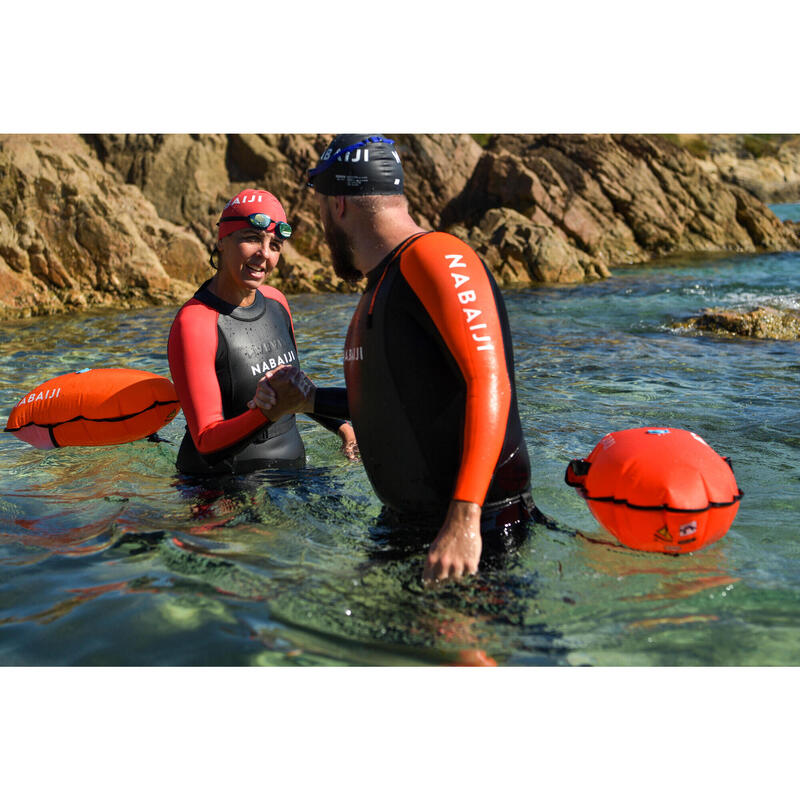Usage advice
To avoid neck irritation and rubbing, use Vaseline or a mixture of 50% Vaseline and 50% lanolin.
Component
Arms: neoprene STANDARD (outer fabric) 1.8 mm
Torso and thighs: neoprene GLIDE SKIN 2 mm
Back and rear legs: neoprene STANDARD 2 mm
FLATLOCK seams: non-waterproof
What are the different types of neoprene: standard and glideskin?
Neoprene is made up of 3 layers:
- Inner layer: mesh.
- Middle layer: foam.
- Outer layer: standard mesh or glideskin.
Standard neoprene has a mesh outer layer. This material is highly resistant, but absorbs water and is more difficult to repair.
Glideskin Neoprene has a polymer outer layer. It offers better glide and is waterproof. It is more fragile, but easily repaired with neoprene glue.
What's the difference between a surf wetsuit and an open water wetsuit?
Surf suits are made from standard neoprene, with a mesh outer layer. This material is highly resistant, but absorbs water. It is suitable for surfing.
Open water wetsuits are developed in part or in full with glideskin neoprene. This impermeable material provides better glide. It is also more fragile. Open water wetsuits are therefore strictly designed for swimming.
Why is a neoprene wetsuit difficult to put on?
Putting on a neoprene wetsuit can be a daunting task, especially for those who have never used one before. Neoprene wetsuits need to be tight-fitting to prevent water penetration during practice. If the wetsuit is wide, the swimmer will feel the cold more, and will also be more exposed to skin irritation as the wetsuit moves during the session.
I feel my muscles work differently when I use a neoprene wetsuit. Is this normal?
If you're in your first open-water sessions with a wetsuit, it's normal to feel a different muscular workout because the sleeve offers more buoyancy to the arms and so we have to add "extra" force to plunge the arm into the water. This sensation will disappear after a few sessions.
 Payment in 3 instalments is possible from a basket value of CHF 50 and requires the approval of our partner CembraPay. You will be able to choose this method of payment, and consult the terms and conditions and applicable fees when finalizing your order.
Payment in 3 instalments is possible from a basket value of CHF 50 and requires the approval of our partner CembraPay. You will be able to choose this method of payment, and consult the terms and conditions and applicable fees when finalizing your order.


